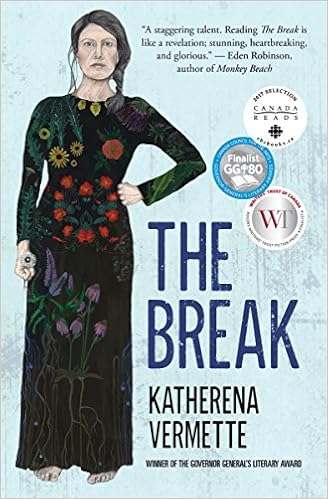4 Stars
This is one of the finalists for Canada Reads 2017.
In a series
of shifting narratives, the novel explores the aftermath of a violent crime on
a community in Winnipeg's North End. The
book could be called a whodunit (Who attacked the young Indigenous woman?), but
it is much more. The reader does see how
the police investigate the case, but the identity of the perpetrator and the
motive soon become obvious. The focus is
on the effects of the crime on the victim, her relatives (e.g.
great-grandmother, grandmother, mother, aunts, cousin) and her friends. In total, ten different viewpoints are given;
except for the Métis police officer leading the
investigation, the voices are those of women.
This is a
compelling read though not an easy one.
It is the first book I have encountered which has had a trigger
warning: “This book is about recovering
and healing from violence. Contains
scenes of sexual and physical violence, and depictions of vicarious trauma.”
This is a
very timely novel. Statistics show that
Indigenous women are three times more likely to be victims of violence than
non-Aboriginal women, and the Canadian government has launched a National Inquiry
into Missing and Murdered Indigenous Women and Girls. Virtually all the women in the novel have
experienced sexual abuse and/or domestic violence and/or addiction and/or
cultural loss and/or family fracturing.
These are such common experiences as to be almost inevitable. The title refers to a piece of undeveloped land
in the middle of the community which becomes the scene of a crime, but it also
refers to broken people, broken relationships, and broken links with the
past.
Besides a
novel about the difficult lives of urban Native women, this is a book about
resilience and survival. The message is
that women need to support each other to give each other the strength to
survive. It is the connection to family
and the love for one’s family which allow for healing and provide the assurance
that “Everything will be okay.” Stella
has distanced herself from her family but when she re-connects, she feels so
comforted that she doesn’t’ want to leave.
The eldest speaker says, “I know I have my people. I can feel them, even when they go away. It means so much to have people. It is everything.”
Of course,
not everyone has a supportive, caring network.
Phoenix, for example, has no one except an uncle, an ex-con,
drug-dealing gang leader. Her mother
Elsie was gang-raped when she was a teenager and became a drug addict, losing
her three children to the child welfare system.
Phoenix’s behaviour therefore becomes understandable and the reader
cannot but feel some sympathy for her.
The added tragedy is that the dysfunction will continue into the next
generation.
The number
of characters is a weakness. Some
(Phoenix and Stella) are well-developed, but others (Cheryl, Louisa, and
Paulina) are not sufficiently differentiated.
A family tree is provided but the number of nicknames adds to the
confusion: Cheryl is sometimes Cher;
Louisa is sometimes Lou; Lorraine is sometimes Rain; Zegwan is Zig and Ziggy; Alex
is Bishop and Ship, etc. Why does
everyone’s name have to be reduced to one syllable? Phoen?!
The use of Paul for Paulina is particularly annoying because of its
gender confusion. The connections
between non-familial characters are sometimes difficult to keep straight (Stella→Elsie→Phoenix→Cedar-Sage→Louisa→Rita→Zegwan→Emily).
Men in the novel
are not portrayed very positively. Young
Native men are gang members and older Native men retreat into the bush: three of the major characters have been
abandoned by husbands. Absentee fathers
for Native children seem to be the norm.
Only three white men make an appearance.
One is Officer Christie, a stereotypical doughnut-loving cop who is lazy
and bigoted. Jeff and Pete, partners of
Indigenous women, remain flat characters.
The book
does not offer excuses or assign blame; it just shows the situation and lets
readers draw conclusions as to responsibility.
We know that the plight of Aboriginals is a consequence of colonization
by whites, but this is not explored. Neither is the role of residential
schools. However, the racism encountered
by Aboriginals in the health care system and among police is shown. The novel’s achievement is putting a human
face to issues that are often misunderstood.
This book
is unflinching in its gaze at life for contemporary Indigenous women in urban
Canada. It is certainly a book Canadians
should read.

No comments:
Post a Comment